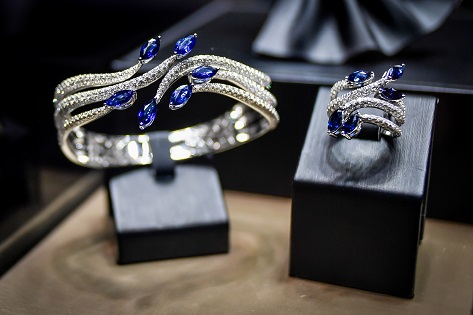The global demand for jewellery is increasing. Sustainability, partnerships, digitization and training are the assets that sector companies should be focusing on.
Vicenzaoro September 2021, inaugurated in Vicenza yesterday by Italian Exhibition Group and ongoing until 14th September, offered all the supply chain players, from mining to production, brands to retail, an overview of the gold-jewellery sector’s status quo and future prospects at the opening talk yesterday afternoon, entitled “The State of Art”, organized with Club degli Orafi Italia.
The pandemic lockdown period has been followed by a surprising recovery. As Stefania Trenti, Industry Office Manager at Intesa Sanpaolo’s Study and Research Centre, said while presenting an unpublished update of the sector’s macro-economic data. It is the sector that, more than any other, went into shock by registering a plunge in prices and consequent downturn in demand, being also limited by the closure of distribution channels and the absence of tourist flows. But the sector “is recovering rapidly: between January and June 2021, the turnover grew by about 80% compared to the minimums of the first six months of last year.” The true measure of growth comes from a comparison with 2019 which, as Trenti highlighted, “is already 8% greater compared to the same period in 2019, a better result compared to the manufacturing industry average.” A growth that is facing a “a global demand scenario that is forecast to increase further over the next few years” characterized by some specific features.

An important rebound for e-commerce and digitization, as well as production. The weight of on-line jewellery sales is estimated to be between 18% and 21% by 2025, compared to 13% in 2019, and the commitment of companies is also expected to grow with 12% of businesses having plans to invest in e-commerce and digital marketing and 7% foreseeing investments in digital production solutions.
Brand value is increasingly asserting itself as the product promotion driver with an average expected growth of between 8% and 12% in the 2019-2025 period in terms of the branded product component, more than double compared to the sector average. To date, 13% of Italian companies have at least one registered trademark. Attention to sustainable themes will grow and influence 20-30% of purchases by 2025. Not less essential is training, indispensable for ensuring that artisanship continues in production: in 2020, 61% of the entries programmed were deemed difficult to find and, of these, 72% were inadequately trained.

But the impact of the pandemic period should not be underestimated, especially in the initial phases of the diamond supply chain, such as mining, which underwent moments of supply crises. Stephen Lussier, Executive Vice-President Consumer and Brands at De Beers, said “We have faced a future full of uncertainties, but I could not be prouder of how we have responded. We immediately began to support all the people – countries, communities and customers – that depend on diamonds.” Responsibility and proactivity were the key words in finding an answer: “De Beers and our JV partners activated a Covid-19 emergency aid programme to the value of about 17 million dollars, working to guarantee that the diamond sector and all those who depend on it could recover and rebuild as rapidly as possible.” The De Beers observatory also sees a rosy future: “we are seeing a demand for diamonds on our key markets that is higher than before the pandemic because these miracles of nature have something vital to say: they are symbols of significant ties, of connection to the world of nature and a source of joy after a period of darkness.”
“For us the crisis was a catalyst for transformation,” said Jérôme Favier, Vice President and CEO of Damiani International. “The final customer is paying ever-greater attention and is looking for brands that tick all the value, content and authenticity boxes. We believe that the game will be played on the omni-channelling pitch and will have multiple touchpoints. In the customer’s experience, it’s the complete route that counts.”
For a sector where remote working possibilities are limited, one relevant aspect was staff management. “The initial impact was hard. We tried to support those who were at home without being able to work and we learned to capture those tiny signs of stress to offer the right help,” says Nicolò Rapone, Operations Senior Director of Jewelry Business Unit, Bulgari. During the months of the pandemic, the brand’s attention was focused on innovation and dialogue, not only with the customers: “We concentrated on implementing specific tools in the after-sales phases and collaboration platforms with partners and suppliers.”
“Every player in the process, from brand to consumer, is speeding up digitization,” Massimo Fasoli, CEO and Jewellery Designer at Fasoli S.p.A., pointed out. There are multiple aspects, and geography plays a leading role: “those closer to the digital backbone are accelerating much more quickly, while those in the suburbs are experiencing a slow bend,” he says, and “this will generate diversities in consumer habits.”
 Collection Pan Arab Luxury Magazine
Collection Pan Arab Luxury Magazine



